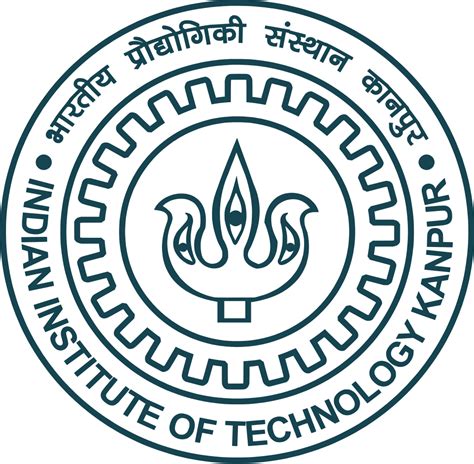
Education / Work History
- Engineer, TSMC (2016-present)
- M.Tech, Center for Lasers and Photonics (CELP), IIT Kanpur (2014-2016)
- U. V. Patel College of Engineering, Mehsana (2009-2013)
Thesis Abstract
Research Topic / Interest
Contact me to know my current interests.
Publications
These include only those published in our lab.
-
Extracting Third Order Optical Nonlinearities of Mn(III)-Phthalocyanine Chloride Using High Repetition Rate Femtosecond Pulses.
K. Makhal, P. Mathur, S. Maurya, and D. Goswami, Journal of Applied Physics 121(5), 053103 (2017)
[PDF]
[BibTeX]
BibTeX: @article{makhalExtractingThirdOrder2017, title = {Extracting Third Order Optical Nonlinearities of {{Mn}}({{III}})-{{Phthalocyanine}} Chloride Using High Repetition Rate Femtosecond Pulses}, author = {Makhal, Krishnandu and Mathur, Paresh and Maurya, Sidharth and Goswami, Debabrata}, date = {2017-02-06}, journaltitle = {Journal of Applied Physics}, shortjournal = {Journal of Applied Physics}, volume = {121}, number = {5}, pages = {053103}, issn = {0021-8979}, doi = {10/gf5mrh}, url = {https://aip.scitation.org/doi/abs/10.1063/1.4974966}, urldate = {2019-08-01} } -
On-the-Fly Calibrated Measure and Remote Control of Temperature and Viscosity at Nanoscale.
D. Mondal, S. N. Bandyopadhyay, P. Mathur, and D. Goswami, ACS Omega 3(9), 12304–12311 (2018)
[Abstract]
[PDF]
[BibTeX]
Abstract: A novel on-the-f ly calibration method of optical tweezers is presented, which enables in situ control and measure of absolute temperature and viscosity at nanoscale dimensions. Such noncontact measurement and control at the nanoscale are challenging as the present techniques only provide off-line measurements that do not provide absolute values. Additionally, some of the present methods have a low spatial resolution. We simultaneously apply the high temporal sensitivity of position autocorrelation and equipartition theorem to precisely measure and control in situ temperature and the corresponding microrheological property around the focal volume of the trap at high spatial resolution. The femtosecond optical tweezers (FOTs) use a single-beam high repetition rate laser for optical trapping to result in finer temperature gradients in comparison to the continuous-wave laser tweezers. Such finer temperature gradients are due to the additional nonlinear optical (NLO) phenomena occurring only at the nanoscale focal plane of the FOTs. Because NLO processes are laser peak power-dependent, they promote an effective study of physical properties occurring only at the focal plane. Using FOTs at optically benign near-infrared wavelengths, we demonstrate microrheological control and measurement in water by adding a highly absorbing yet low fluorescent dye (IR780).
BibTeX: @article{mondalOntheFlyCalibratedMeasure2018, title = {On-the-{{Fly Calibrated Measure}} and {{Remote Control}} of {{Temperature}} and {{Viscosity}} at {{Nanoscale}}}, author = {Mondal, Dipankar and Bandyopadhyay, Soumendra Nath and Mathur, Paresh and Goswami, Debabrata}, date = {2018-09-30}, journaltitle = {ACS Omega}, shortjournal = {ACS Omega}, volume = {3}, number = {9}, pages = {12304--12311}, issn = {2470-1343, 2470-1343}, doi = {10/gff5s6}, url = {http://pubs.acs.org/doi/10.1021/acsomega.8b01572}, urldate = {2019-08-01} } -
Precise Control and Measurement of Solid–Liquid Interfacial Temperature and Viscosity Using Dual-Beam Femtosecond Optical Tweezers in the Condensed Phase.
D. Mondal, P. Mathur, and D. Goswami, Physical Chemistry Chemical Physics 18(37), 25823–25830 (2016)
[Abstract]
[PDF]
[BibTeX]
Abstract: We present a novel method of microrheology based on femtosecond optical tweezers, which in turn enables us to directly measure and control in situ temperature at microscale volumes at the solid–liquid interface. A noninvasive pulsed 780 nm trapped bead spontaneously responds to changes in its environment induced by a co-propagating 1560 nm pulsed laser due to mutual energy transfer between the solvent molecules and the trapped bead. Strong absorption of the hydroxyl group by the 1560 nm laser creates local heating in individual and binary mixtures of water and alcohols. “Hot Brownian motion” of the trapped polystyrene bead is reflected in the corner frequency deduced from the power spectrum. Changes in corner frequency values enable us to calculate the viscosity as well as temperature at the solid–liquid interface. We show that these experimental results can also be theoretically ratified.
BibTeX: @article{mondalPreciseControlMeasurement2016a, title = {Precise Control and Measurement of Solid–Liquid Interfacial Temperature and Viscosity Using Dual-Beam Femtosecond Optical Tweezers in the Condensed Phase}, author = {Mondal, Dipankar and Mathur, Paresh and Goswami, Debabrata}, date = {2016}, journaltitle = {Physical Chemistry Chemical Physics}, volume = {18}, number = {37}, pages = {25823--25830}, doi = {10/gf5mr8}, url = {https://pubs.rsc.org/en/content/articlelanding/2016/cp/c6cp03093a}, urldate = {2019-08-01} } -
On-the-Fly Calibrated Measure and Remote Control of Temperature and Viscosity at Nanoscale.
D. Mondal, S. N. Bandyopadhyay, P. Mathur, and D. Goswami, ACS Omega 3(9), 12304–12311 (2018)
[Abstract]
[PDF]
[BibTeX]
Abstract: A novel on-the-f ly calibration method of optical tweezers is presented, which enables in situ control and measure of absolute temperature and viscosity at nanoscale dimensions. Such noncontact measurement and control at the nanoscale are challenging as the present techniques only provide off-line measurements that do not provide absolute values. Additionally, some of the present methods have a low spatial resolution. We simultaneously apply the high temporal sensitivity of position autocorrelation and equipartition theorem to precisely measure and control in situ temperature and the corresponding microrheological property around the focal volume of the trap at high spatial resolution. The femtosecond optical tweezers (FOTs) use a single-beam high repetition rate laser for optical trapping to result in finer temperature gradients in comparison to the continuous-wave laser tweezers. Such finer temperature gradients are due to the additional nonlinear optical (NLO) phenomena occurring only at the nanoscale focal plane of the FOTs. Because NLO processes are laser peak power-dependent, they promote an effective study of physical properties occurring only at the focal plane. Using FOTs at optically benign near-infrared wavelengths, we demonstrate microrheological control and measurement in water by adding a highly absorbing yet low fluorescent dye (IR780).
BibTeX: @article{mondalOntheFlyCalibratedMeasure2019, langid = {english}, title = {On-the-{{Fly Calibrated Measure}} and {{Remote Control}} of {{Temperature}} and {{Viscosity}} at {{Nanoscale}}}, volume = {3}, issn = {2470-1343, 2470-1343}, url = {http://pubs.acs.org/doi/10.1021/acsomega.8b01572}, doi = {10/gff5s6}, number = {9}, journaltitle = {ACS Omega}, urldate = {2019-08-01}, date = {2018-09-30}, pages = {12304-12311}, author = {Mondal, Dipankar and Bandyopadhyay, Soumendra Nath and Mathur, Paresh and Goswami, Debabrata} } -
Extracting Third Order Optical Nonlinearities of Mn(III)-Phthalocyanine Chloride Using High Repetition Rate Femtosecond Pulses.
K. Makhal, P. Mathur, S. Maurya, and D. Goswami, Journal of Applied Physics 121(5), 053103 (2017)
[PDF]
[BibTeX]
BibTeX: @article{makhalExtractingThirdOrder2018, title = {Extracting Third Order Optical Nonlinearities of {{Mn}}({{III}})-{{Phthalocyanine}} Chloride Using High Repetition Rate Femtosecond Pulses}, volume = {121}, issn = {0021-8979}, url = {https://aip.scitation.org/doi/abs/10.1063/1.4974966}, doi = {10/gf5mrh}, number = {5}, journaltitle = {Journal of Applied Physics}, urldate = {2019-08-01}, date = {2017-02-06}, pages = {053103}, author = {Makhal, Krishnandu and Mathur, Paresh and Maurya, Sidharth and Goswami, Debabrata} } -
Precise Control and Measurement of Solid–Liquid Interfacial Temperature and Viscosity Using Dual-Beam Femtosecond Optical Tweezers in the Condensed Phase.
D. Mondal, P. Mathur, and D. Goswami, Physical Chemistry Chemical Physics 18(37), 25823–25830 (2016)
[Abstract]
[PDF]
[BibTeX]
Abstract: We present a novel method of microrheology based on femtosecond optical tweezers, which in turn enables us to directly measure and control in situ temperature at microscale volumes at the solid–liquid interface. A noninvasive pulsed 780 nm trapped bead spontaneously responds to changes in its environment induced by a co-propagating 1560 nm pulsed laser due to mutual energy transfer between the solvent molecules and the trapped bead. Strong absorption of the hydroxyl group by the 1560 nm laser creates local heating in individual and binary mixtures of water and alcohols. “Hot Brownian motion” of the trapped polystyrene bead is reflected in the corner frequency deduced from the power spectrum. Changes in corner frequency values enable us to calculate the viscosity as well as temperature at the solid–liquid interface. We show that these experimental results can also be theoretically ratified.
BibTeX: @article{mondalPreciseControlMeasurement2016b, langid = {english}, title = {Precise Control and Measurement of Solid–Liquid Interfacial Temperature and Viscosity Using Dual-Beam Femtosecond Optical Tweezers in the Condensed Phase}, volume = {18}, url = {https://pubs.rsc.org/en/content/articlelanding/2016/cp/c6cp03093a}, doi = {10/gf5mr8}, number = {37}, journaltitle = {Physical Chemistry Chemical Physics}, urldate = {2019-08-01}, date = {2016}, pages = {25823-25830}, author = {Mondal, Dipankar and Mathur, Paresh and Goswami, Debabrata} }
